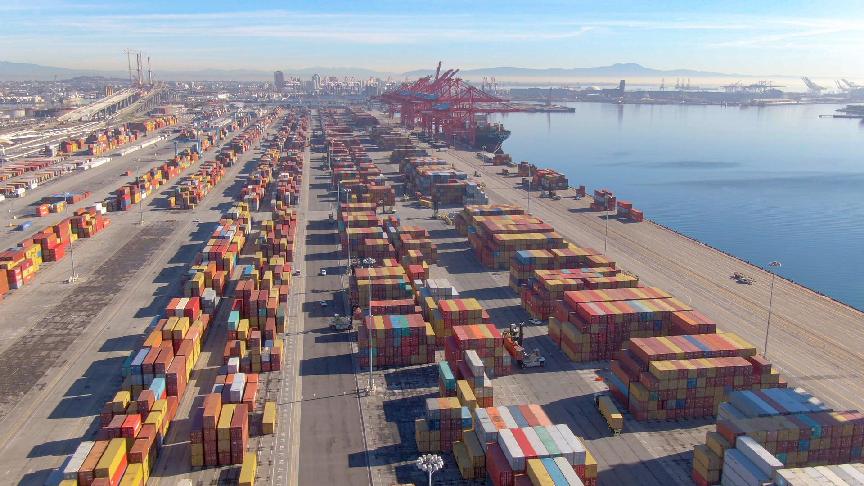According to the Intermodal Association of North America (IANA), railway carriers in North America carried over 2 million containers during the months of July, August, and September 2024.
This substantial increase was partly due to a 6% rise in volumes in Southern California compared to Q3-2023.
The surge in volumes led to a peak in dwell times for rail-bound containers at the ports of Los Angeles and Long Beach.
The Pacific Merchant Shipper Association (PMSA) reports that the average rail-destined cargo dwell time rose to 9.25 days in September, higher than the peak of September 2023, when it averaged 6.54 days.
Los Angeles and Long Beach ports had an average rail dwell time of four days prior to the container surges in August and September.
“Truck and rail-destined container dwell times both reached their highest levels this year, reflecting the ongoing pressures on the logistics system as it copes with sustained demand,” said the PMSA in a recent report.

Regional and global challenges drive up volumes
Shipping experts believe the surge in volumes at the US West Coast ports was partly driven by recent challenges, including the port strike on the US East Coast and the Red Sea crisis.
A CNBC report highlighted that this September was the strongest September ever for the Port of Los Angeles, as it moved nearly 954,000 TEU.
LA Port Executive Director Gene Seroka told CNBC there are “currently 20,000 rail containers sitting at the port waiting to be loaded out.”
However, Seroka stressed that the congestion has not been impacting vessel and trucking operations. “This is not impacting port operations,” Seroka tells CNBC.
Meanwhile, Long Beach Port Executive Director Mario Cordero said that rail dwell times for containers in Long Beach averaged 7 days, and the port is not experiencing congestion.
“Given our historic number of TEUs moving through [the Port of Long Beach] for the last three months, the current rail dwell is not of immediate concern,” Cordero said.
“Port of Long Beach is not experiencing any congestion or bottlenecks. Our operations are fluid. We are in a good position to receive continued record cargo given our current capacity.”
The Port of Long Beach handled 829,499 TEUs in September, a fourth consecutive month of increased cargo compared to the previous year.
Railroads gear up
From the railroads' side, Union Pacific acknowledged that volume increases pushed the carrier to use more of its resources.
A company's spokesperson reveals that "Union Pacific is using its buffer of resources (employees, locomotives and railcars) to manage double-digit international intermodal volumes from the Ports of Los Angeles and Long Beach."
Similarly, a BNSF railroad representative mentioned that they are “speeding up” to keep up with the volumes.
“We are also departing full-length westbound trains from Chicago on schedule even without a full load of containers in order to get needed rail cars back to the ports. ... Our container yard capacity is ready at key destination facilities to unload trains,” a BNSF spokesperson tells CNBC.







